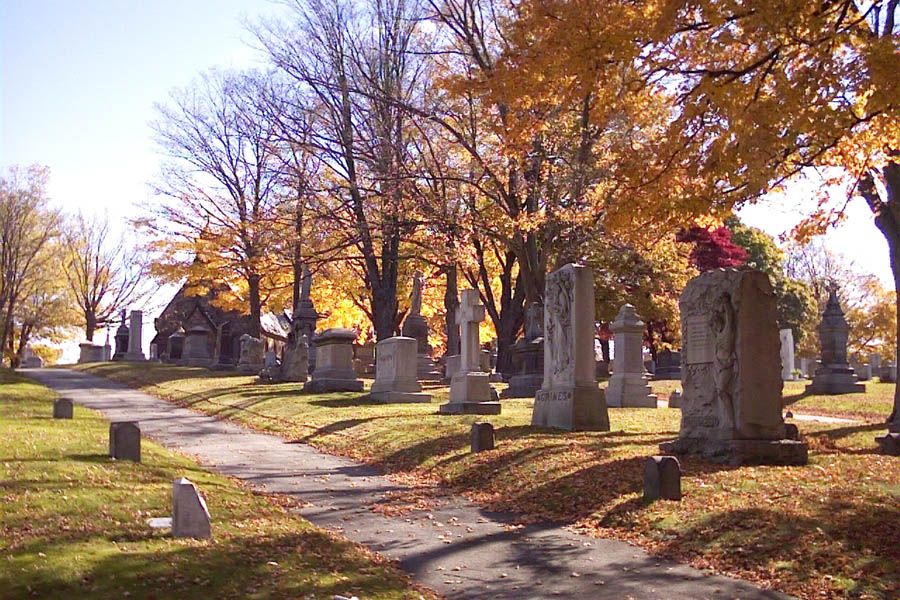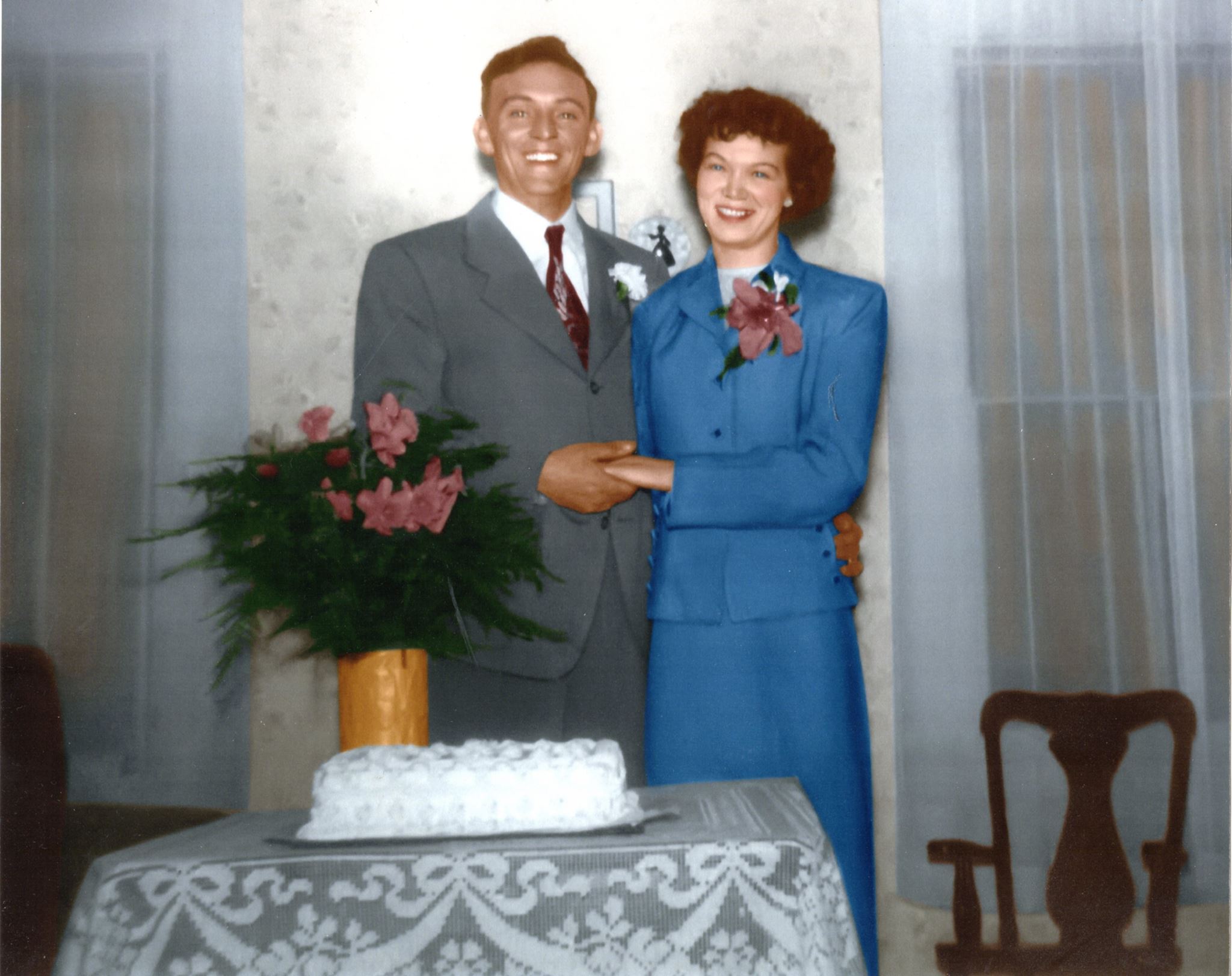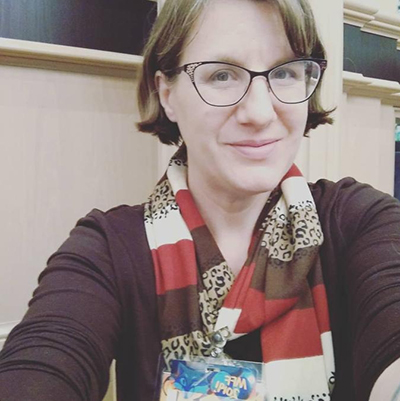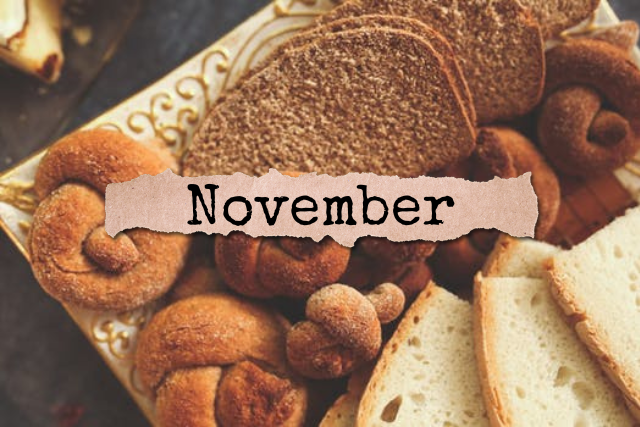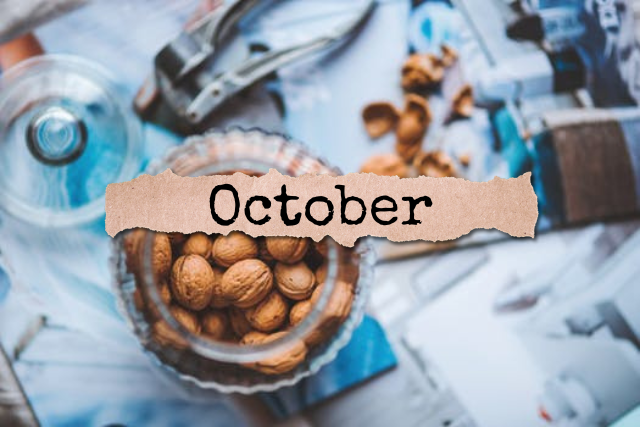After almost 30 years of pursuing genealogy and family history, I’ve had to make many revisions. This is the result of both traditional research and NPEs identified through DNA testing. I thought I would review five or six generations of my ancestors and discuss what has changed and what I’ve learned as a result.
My parents, sister, and I are all from Plymouth County, Massachusetts. All four of my grandparents were born in Plymouth County. When we get to my great-grandparents, things branch out a little bit, though still remain in New England other than one recently-discovered great-grandfather who was born in Italy. So let’s start looking at my family with this generation! After this, I’ll share a series of posts looking both my ex-husband’s and husband’s ancestors, as well.
Lewis Preston Wood & Ruth Evelyn Wood
I knew my paternal great-grandparents, but since my great-grandpa Wood passed away when I was only 6 and my great-grandma Wood developed dementia before I was a teenager, I didn’t have as much time with them as I would have liked. As I grew up, I learned more about them, but I wish I could have gotten stories from them.
Wood Family of Blue Hill, Maine
Lewis was born 15 February 1892 in Boston. His parents were Lemuel Augustus Wood and Georgianna Winsor. Lemuel was the son of Benjamin Stone Wood and Susanna Whitmore, of Blue Hill, Maine. We descend from Joseph Wood, one of the founders of Blue Hill. My father didn’t have sons to pass down the Wood name, but he has many paternal male cousins. I’m currently working on deeper research into our gateway ancestor, Anthony Wood, who came from England to Ipswich, Essex County, Massachusetts before 1668.
William Winsor of Duxbury, Massachusetts & Port Angeles, Washington
Georgianna was the daughter of William W. Winsor and Elizabeth Ann Church Simmons. William was from the Winsor family in Duxbury, Massachusetts, while Elizabeth comes from the Simmons family of Little Compton, Rhode Island. The Simmons family of Rhode Island is easy to trace back to the 1600s, as are the other Rhode Island and Massachusetts families that married into it over the years.
I’ve been particularly fascinated with William and his mother for a while. William left his wife and three daughters sometime before 1860 and was one of the first settlers of Port Angeles, Washington with Rufus Holmes, another native of Duxbury. Rufus returned to Massachusetts, but William remained in the Pacific Northwest, meandering between Washington and Victoria, British Columbia. I don’t know where he disappeared to after 1867, when he was mentioned in a court case for debt collection that was filed against him in Jefferson County, Washington. I hope to obtain the documents from that case to learn more about him.
Howett Family of Tyrrell County, North Carolina
Meanwhile, William’s mother was Martha “Patsy” Howett and learning about her several years ago opened up an unexpected area of research for me. At the time, I didn’t know I had southern ancestors – as far as I knew, I was “all Yankee” with some Italian in there.
I soon learned that Martha was born in Tyrrell County, North Carolina. The deeper I dug, the more I learned about her old tidewater-area ancestry in Tyrrell and Perquimans Counties. Her mother was Lydia Sanderson, a granddaughter of Major Richard Sanderson, who possessed a considerable estate.
Martha’s father, Richard Howett, had at least 19 people enslaved at one point, and trying to discover both the history of their plantation and what became of those people has become an important project for me. Researching southern ancestors is, of course, very different than researching New England families. There are fewer vital records and we need to rely more on land transactions and probate files. Trying to bridge the gap between people who were enslaved in the early to mid-1800s and the years after Emancipation is a new challenge that I’m attempting to navigate.
Wood Family of Manchester, England
My great-grandmother, Ruth Evelyn Wood, was born 39 July 1898 in Pawtucket, Providence, Rhode Island. No, she and my great-grandfather (her husband) were not related. Her parents were John William Wood and Lulu Gertrude Lyman. Ruth’s father came to Willimantic, Connecticut with his parents, Thomas Wood and Sarah Ann Gray. They had lived in the Ancoats district of Manchester, England before emigrating to the United States.
Such common English names have posed research challenges for me, of course. One of the first records I ever requested from England was the marriage of Thomas and Sarah, which named their fathers. But, more than that, it gave me occupations for the fathers. You don’t realize how important knowing an occupation is until you’re trying to figure out which Thomas Wood and which John Wood and which William Gray you should be looking at in British censuses! It truly helps to have that additional identifier when you’re working with these kinds of names.
Thomas Wood’s parents were John Wood and Ann Siddall. Sarah Ann Gray’s parents were William Gray and Ann Jane Mason. Researching Thomas’s siblings has been difficult, however I’ve had no problem finding Sarah’s siblings, their marriages, their children, and even their grandchildren! Most remained in England, however at least one came to the United States and has living children here. We aren’t closely related – these are 3rd cousins, twice removed living in both the United States and England – but I may reach out to them and say hello, and see if we can connect.
Lyman and Barrows of Tolland County, Connecticut
On my great-grandmother’s mother’s side, we return to old New England families. The Lyman, Chapman, Barrows, and Gurley families of Tolland County, with some connections to Windham County, as well, go back to the early days of Connecticut. My great-grandmother’s mother, Lulu, had an interesting upbringing. Lulu’s parents were William C. Lyman and Martha M. Barrows. William served in the Civil War and then was part of the GAR. The family lived in New York City in 1870 and Kansas in 1880, before returning to Connecticut.
From what I understand, these moves had to do with their son, Frank, who was deaf. This allowed him to attend special schools, but I’m sure there is more to learn about Frank than I have ever delved into. He died in 1892, only 25-years-old, and I wonder if this was just bad luck or if he had other health challenges.
Lulu’s only other sibling was her sister, Bertha, who married Clifford Alpaugh on 27 May 1902. Bertha and Clifford never had children and are buried with Clifford’s parents in Windham, Connecticut.
As you can see, my paternal side has a few questions I would like to answer and people whose lives I would like to learn more about, if possible. The only thing about my Wood side that has changed from the paper trail is a cousin discovery that, unfortunately, no one seems ready to discuss. I hold out hope that, maybe someday, that DNA discovery is something the people involved will be able to reconcile in a healthy way.





